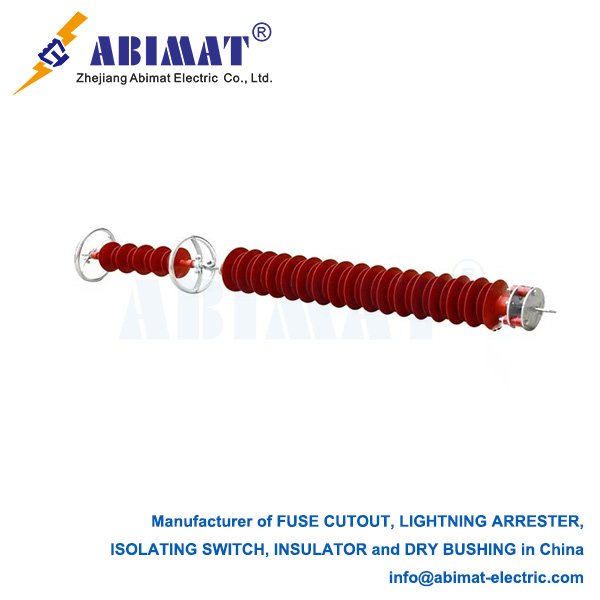66kV Surge Arresters: Essential Protection for Medium-High Voltage Systems
In 66kV power systems, keeping important gear safe is a must. Things like transformers, switchgear, and cables—they need protection from sudden voltage spikes.
Surge arresters are the main line of defense here. The 66kV ones? They’re key for protecting medium-high voltage networks.

Function and Operating Principle
A 66kV surge arrester is a device that limits voltage. It gets installed between the phase and the ground, usually close to the equipment it’s protecting.
It works fast. When dangerous surge currents hit—from lightning or switching—this arrester sends them safely into the ground. That stops the voltage at equipment terminals from getting too high, keeping it at a safe level.
And here’s the key part: after doing its job, the arrester has to go back to a high-impedance state. That way, it can block the normal power frequency current from flowing through.
Core Technology: Metal Oxide Varistors (MOVs)
Modern 66kV arresters primarily use Zinc Oxide (ZnO) varistors. These sintered ceramic blocks exhibit highly nonlinear electrical behavior:
At Normal Voltage: They act as insulators with minimal leakage current (typically microamperes).
During Overvoltage: Their resistance drops dramatically within nanoseconds, conducting high surge currents (kA range) while clamping the voltage.
Design Fundamentals
Creepage Distance: Shed profiles are engineered to provide optimal creepage paths for specific pollution severity levels (per IEC 60815), often exceeding the protection offered by similarly rated porcelain units.
Moisture Sealing: Precision sealing at the core/fitting/housing interfaces (using silicone gels/gaskets) is paramount to prevent moisture ingress and potential core brittle fracture (CBF).
Core-End Fitting Interface: The mechanical connection between the fiberglass core and metal fitting is a critical engineered joint, designed for long-term integrity under constant mechanical load and environmental stress.
Flame Retardancy: Quality composite insulators meet stringent self-extinguishing standards.
Primary Applications
A standard 66kV arrester with a polymer case has several parts.
First, the MOV stack. It’s made of zinc oxide discs connected in a line. These discs are rated to handle the system’s voltage and energy stress.
There’s a voltage grading system too. Inside, parts like grading rings make sure voltage spreads evenly across the MOV stack.
The polymer housing is important. It’s usually silicone rubber or something similar. It gives strength, resists dirt, repels water, and stops explosions—taking the place of old porcelain casings.
Hermetic seals are part of it. They keep moisture out, so the arrester works reliably for a long time.
And there’s mounting hardware. Brackets or flanges hold it securely when installed.
Key Selection Parameters
Choosing the correct 66kV arrester requires evaluating:
System Voltage: Nominal voltage (66kV) and maximum continuous operating voltage (MCOV/Uc).
Rated Voltage (Ur): Maximum temporary overvoltage (TOV) withstand capability for 10 seconds post-surge.
Nominal Discharge Current (In): Peak 8/20 μs impulse current (e.g., 5kA, 10kA, 20kA) defining standard duty.
Residual Voltage (Ures): Peak voltage during In discharge—the critical protective level. Lower Ures enhances protection but may increase cost/size.
Energy Absorption: Maximum surge energy (kJ/kV of Ur) handled without failure.
Pressure Relief (for porcelain): Safe gas venting capability during failure (less critical for polymer units).
Importance and Compliance
The right type of 66,000-volt surge arresters makes the power system much more dependable. They help keep important equipment safe. These arresters stop sudden high-voltage spikes from wrecking transformers and other devices. This protection cuts down on unexpected outages and repair time.
These safety devices follow strict international rules. The main standard is called IEC 60099-4. This rulebook tells makers exactly how the arresters must work. It covers how well they perform their job. It explains how they are sorted into different types. It also lists all the tough tests they must pass before use.
Conclusion
Abimat 66kV surge arresters are key for protecting important power equipment. They use advanced zinc oxide varistor technology, all housed in strong polymer casings. These arresters act in an instant. They limit too-high voltages, keeping equipment safe at this voltage level. To get the best protection, you need to pick the right one. It depends on the system’s settings and the arrester’s ratings.


